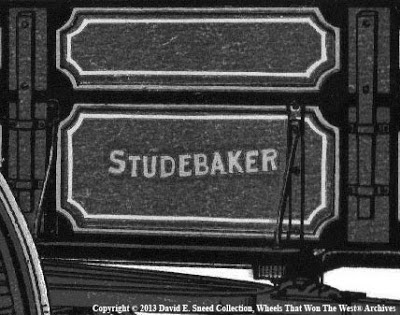Typically, the correctpaint and construction styles of a particular manufacturer depend not only on thetype of wagon and region of use, but also the timeframe in which it wasproduced. Studebaker farm wagons, for example, had no less than a handfulof distinctive variations in the paint schemes between 1852 and 1921. Within those variations, not only did the base color design change over timebut, the striping, stenciling, logo styles and positions of these elements werealso evolving.
In fact, during the1870’s and early 1880’s, Studebaker’s paint style was so unique, the vehiclecould actually be identified as a ‘Studebaker’ without seeing the name or anyother construction features. It’s one more part of the history of theseearly vehicle builders that makes authoritative evaluations a bit morechallenging.
Ultimately, the more weknow about these early vehicles and their makers, the easier it is tounderstand how complex the industry was and the vehicles continue to be.

